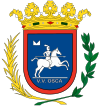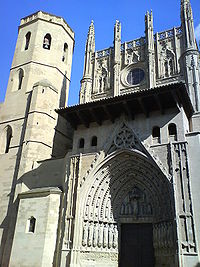Chapter II Section II Sub-Section I The Child in Assyria
The original of that mother, so widely worshipped, there is reason to believe, was Semiramis, * already referred to, who, it is well known, was worshipped by the
Babylonians, and other eastern nations, and that under the name of Rhea, the great Goddess "Mother."
* Sir H. Rawlinson having found evidence at Nineveh, of the existence of a Semiramis about six or seven centuries before the Christian era, seems inclined to regard her as the only Semiramis that ever existed. But this is subversive of all history. The fact that there was a Semiramis in the primeval ages of the world, is beyond all doubt, although some of the exploits of the latter queen have evidently been attributed to her predecessor. Mr. Layard dissents from Sir. H. Rawlinson's opinion.
It was from the son, however, that she derived all her glory and her claims to deification. That son, though represented as a child in his mother's arms, was a person of great stature and immense bodily powers, as well as most fascinating manners. In Scripture he is referred to (Eze 8:14) under the name of Tammuz, but he is commonly known among classical writers under the name of Bacchus, that is, "The Lamented one." *
* From Bakhah "to weep" or "lament." Among the Phoenicians, says Hesychius, "Bacchos means weeping." As the women wept for Tammuz, so did they for Bacchus.
To the ordinary reader the name of Bacchus suggests nothing more than revelry and drunkenness, but it is now well known, that amid all the abominations that attended his orgies, their grand design was professedly "the purification of souls," and that from the guilt and defilement of sin. This lamented one, exhibited and adored as a little child in his mother's arms, seems, in point of fact, to have been the husband of Semiramis, whose name, Ninus, by which he is commonly known in classical history, literally signified "The Son." As Semiramis, the wife, was worshipped as Rhea, whose grand distinguishing character was that of the great goddess "Mother," * the conjunction with her of her husband, under the name of Ninus, or "The Son," was sufficient to originate the peculiar worship of the "Mother and Son," so extensively diffused among the nations of antiquity; and this, no doubt, is the explanation of the fact which has so much puzzled the inquirers into ancient history, that Ninus is sometimes called the husband, and sometimes the son of Semiramis.
* As such Rhea was called by the Greeks, Ammas. Ammas is evidently the Greek form of the Chaldee Ama, "Mother."
This also accounts for the origin of the very same confusion of relationship between Isis and Osiris, the mother and child of the Egyptians; for as Bunsen shows, Osiris was represented in Egypt as at once the son and husband of his mother; and actually bore, as one of his titles of dignity and honour, the name "Husband of the Mother." * This still further casts light on the fact already noticed, that the Indian God Iswara is represented as a babe at the breast of his own wife Isi, or Parvati.
* BUNSEN. It may be observed that this very name "Husband of the Mother," given to Osiris, seems even at this day to be in common use among ourselves, although there is not the least suspicion of the meaning of the term, or whence it has come. Herodotus mentions that when in Egypt, he was astonished to hear the very same mournful but ravishing "Song of Linus," sung by the Egyptians (although under another name), which he had been accustomed to hear in his own native land of Greece. Linus was the same god as the Bacchus of Greece, or Osiris of Egypt; for Homer introduces a boy singing the song of Linus, while the vintage is going on (Ilias), and the Scholiast says that this son was sung in memory of Linus, who was torn in pieces by dogs. The epithet "dogs," applied to those who tore Linus in pieces, is evidently used in a mystical sense, and it will afterwards been seen how thoroughly the other name by which he is known--Narcissus--identifies him with the Greek Bacchus and Egyptian Osiris.
In some places in Egypt, for the song of Linus or Osiris, a peculiar melody seems to have been used. Savary says that, in the temple of Abydos, "the priest repeated the seven vowels in the form of hymns, and that musicians were forbid to enter it." (Letters) Strabo, whom Savary refers to, calls the god of that temple Memnon, but we learn from Wilkinson that Osiris was the great god of Abydos, whence it is evident that Memnon and Osiris were only different names of the same divinity. Now the name of Linus or Osiris, as the "husband of his mother," in Egypt, was Kamut (BUNSEN). When Gregory the Great introduced into the Church of Rome what are now called the Gregorian Chants, he got them from the Chaldean mysteries, which had long been established in Rome; for the Roman Catholic priest, Eustace, admits that these chants were largely composed of "Lydian and Phrygian tunes" (Classical Tour), Lydia and Phrygia being among the chief seats in later times of those mysteries, of which the Egyptian mysteries were only a branch.
These tunes were sacred--the music of the great god, and in introducing them Gregory introduced the music of Kamut. And thus, to all appearance, has it come to pass, that the name of Osiris or Kamut, "the husband of the mother," is in every-day use among ourselves as the name of the musical scale; for what is the melody of Osiris, consisting of the "seven vowels" formed into a hymn, but--the Gamut?
Now, this Ninus, or "Son," borne in the arms of the Babylonian Madonna, is so described as very clearly to identify him with Nimrod. "Ninus, king of the Assyrians," * says Trogus Pompeius, epitomised by Justin, "first of all changed the contented moderation of the ancient manners, incited by a new passion, the desire of conquest. He was the first who carried on war against his neighbours, and he conquered all nations from Assyria to Lybia, as they were yet unacquainted with the arts of war." [...]



 Ok, maybe it's one of those Thor's Pantheum and Project Awaken things, but that picture reminded me of the cartoon series Samurai Jack on Cartoon Network in reruns I think now... used to watch it.. interesting in the beginning before it went too childish.
Ok, maybe it's one of those Thor's Pantheum and Project Awaken things, but that picture reminded me of the cartoon series Samurai Jack on Cartoon Network in reruns I think now... used to watch it.. interesting in the beginning before it went too childish.  as the plotline is:
as the plotline is: